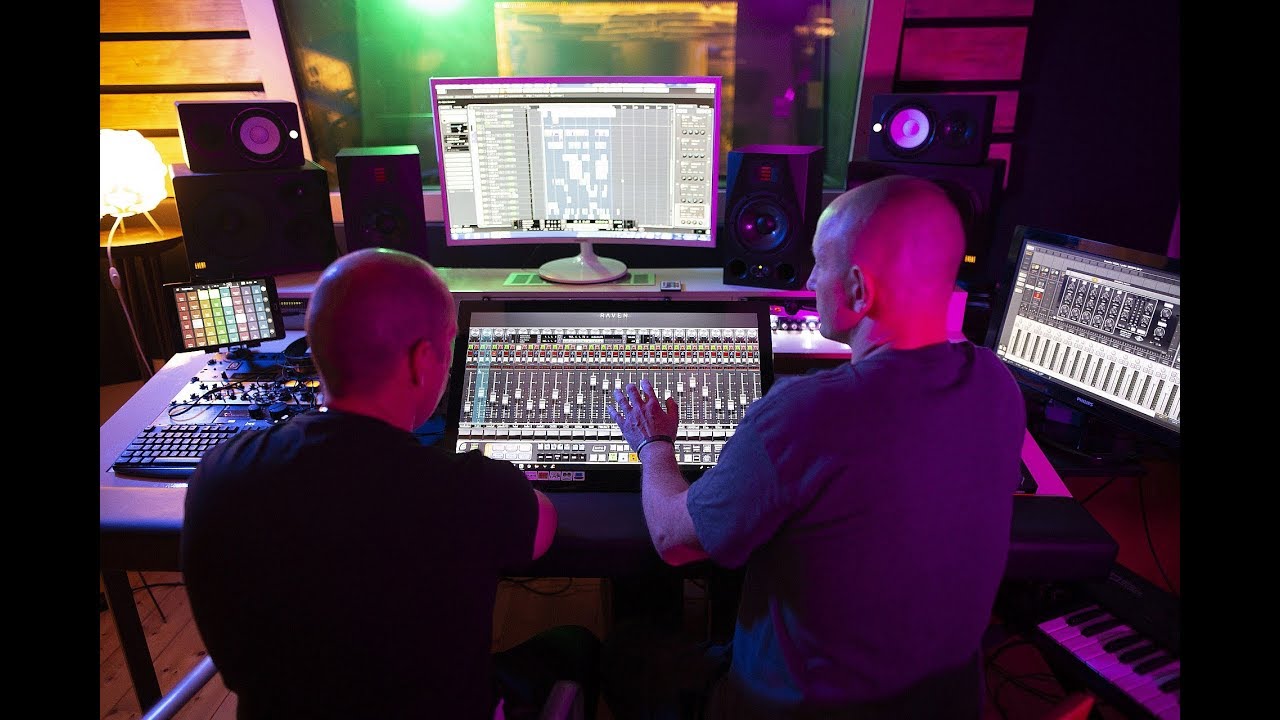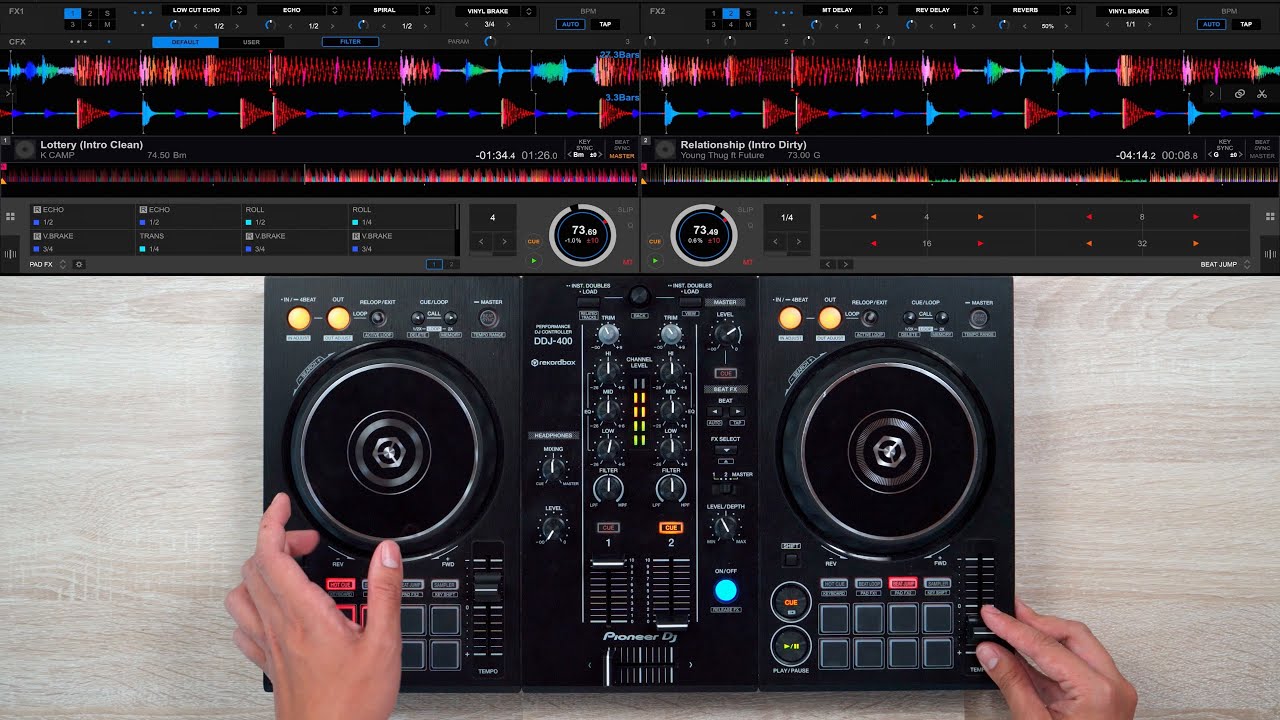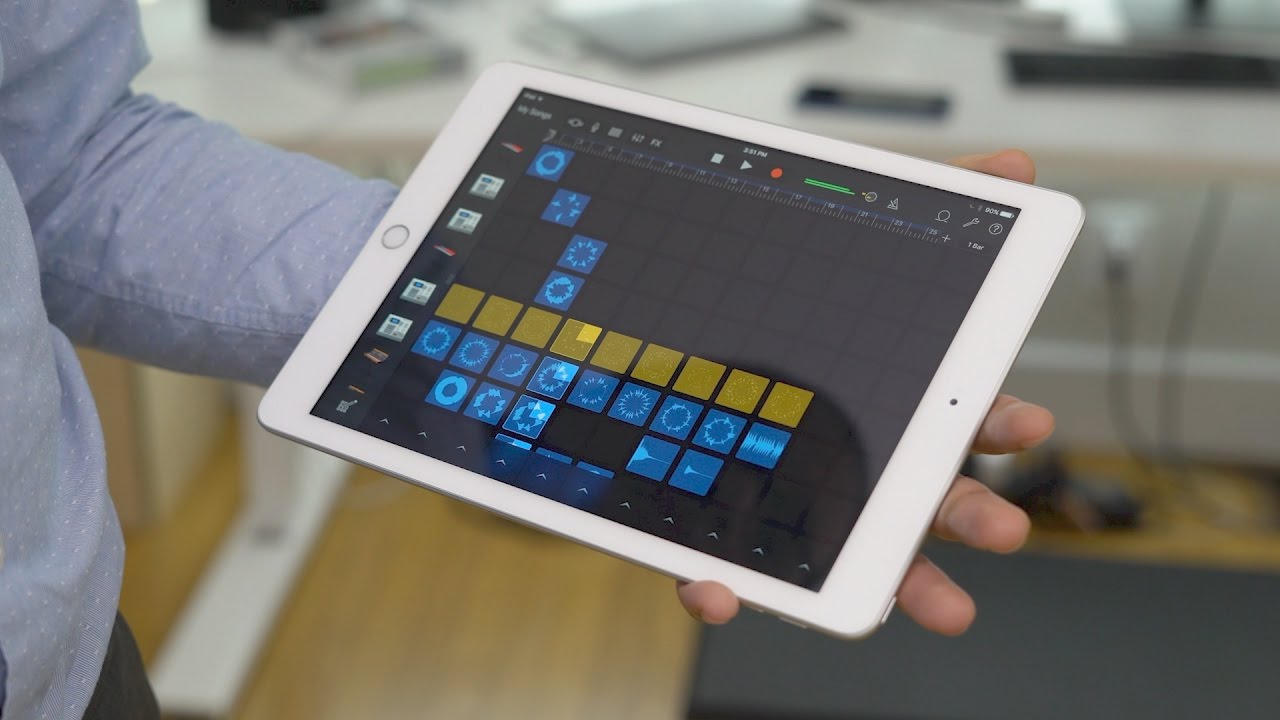Home>Production & Technology>Remix>How Do I Make A Remix Of Songs


Remix
How Do I Make A Remix Of Songs
Published: November 23, 2023
Learn how to make a remix of songs and bring out your creativity with step-by-step instructions and tips. Start creating your own unique remixes now!
(Many of the links in this article redirect to a specific reviewed product. Your purchase of these products through affiliate links helps to generate commission for AudioLover.com, at no extra cost. Learn more)
Table of Contents
Introduction
Music has the power to touch our hearts, stir emotions, and transport us to different dimensions. And for those with a creative spark, nothing compares to the thrill of taking an existing song and transforming it into something entirely new. This is where the art of remixing comes in.
Remixing is the process of taking an original song and giving it a fresh twist by rearranging, editing, and incorporating new elements. It allows musicians, DJs, and producers to put their own unique stamp on a piece of music, breathing new life into familiar tunes and captivating listeners in unexpected ways.
Whether you’re a seasoned musician or just starting out on your musical journey, learning how to make a remix can be an exciting and rewarding endeavor. With the right approach and a deep understanding of the remixing process, you can unleash your creativity and create your own sonic masterpiece.
In this article, we will explore the art of remixing and guide you through the step-by-step process of creating your own remix. From choosing the right song to sharing your creation with the world, we’ll cover everything you need to know to dive into the world of remixing.
So, let’s get started and unlock the secrets of making incredible remixes that will have people dancing, singing along, and experiencing music in a whole new way.
Understanding Remixing
Before diving into the process of making a remix, it’s important to have a clear understanding of what remixing entails. A remix is not simply playing a song and adding a few effects or instruments; it is a creative reinterpretation of the original piece, bringing a fresh perspective and unique artistic vision.
When remixing a song, you have the opportunity to explore different genres, experiment with new sounds, and reshape the structure of the track. This allows you to put your own artistic spin on the music while keeping elements that make the original recognizable.
Remixing requires a deep appreciation for both the original artist’s work and your own creative instincts. It involves dissecting the original song, analyzing its components, and determining how best to reassemble them in a new and compelling way. It’s a delicate balancing act of honoring the essence of the original while introducing your own unique ideas and style.
Moreover, remixing can be a collaborative process. Many remixes involve working with stems, which are individual tracks or isolated parts of the original song. These stems can be provided by the original artist or obtained through official remix contests. Collaborating with other artists, such as vocalists or instrumentalists, can also add a fresh dynamic to your remix.
Ultimately, remixing is an art form that allows you to express your creativity, showcase your production skills, and connect with a broader audience. It is a chance to breathe new life into existing music, infusing it with your energy and style.
Now that we have a solid understanding of what remixing entails, let’s move on to the next step: choosing the right song for your remix.
Choosing the Right Song
When it comes to remixing, one of the most crucial decisions you’ll make is choosing the right song to work with. While personal preference plays a role, there are a few factors to consider that can greatly impact your remix’s success.
First and foremost, choose a song that resonates with you. Remixing is a creative process, so you’ll want to work with music that inspires and motivates you. Look for songs that have a strong emotional connection or a catchy melody that you can build upon.
It’s also important to assess the potential of the song for remixing. Consider the genre and style of the original track. Does it lend itself well to reinterpretation and experimentation? Can you envision adding new elements or transforming the song in interesting ways?
Additionally, pay attention to the popularity and relevance of the song. Remixing a popular track can help generate more interest and exposure for your work. However, keep in mind that remixing a lesser-known song might provide more creative freedom and allow you to stand out from the crowd.
Another factor to consider is the availability of stems or acapellas. Working with isolated tracks of vocals, instruments, or other elements from the original song gives you more control and flexibility during the remixing process. Some artists or labels may release official remix packs, while others might provide stems upon request.
Lastly, think about the potential audience for your remix. Are you targeting a specific genre or demographic? Will your remix appeal to fans of the original artist or attract new listeners? Understanding your target audience can guide your creative decisions and help you create a remix that resonates with your intended listeners.
By carefully considering these factors, you can choose a song that aligns with your creative vision and has the potential to stand out in the vast world of remixes.
Now that you’ve chosen the right song, the next step is obtaining the necessary song stems.
Obtaining Song Stems
Once you’ve selected the perfect song to remix, the next step is obtaining the individual stems or parts of the original track. These stems allow you to isolate and manipulate specific elements, such as vocals, drums, or synths, giving you greater control over the remixing process.
There are several ways to obtain song stems for your remix. The first option is to reach out to the original artist or label directly. Some artists and labels release official remix packs, providing stems and additional resources for aspiring remixers. Check the artist’s website, social media channels, or official remix contests to see if stems are available or if they accept remix submissions.
Another option is to search for remix competitions. Many artists or labels organize remix contests, inviting producers to remix a specific song. These contests often provide stems as downloadable files, giving you the opportunity to work with the individual tracks and showcase your remixing skills.
If the stems are not readily available, you can attempt to isolate them yourself using audio editing and processing techniques. However, this can be a time-consuming and challenging process, especially if the original mix is heavily layered or processed. It’s recommended to have some experience and a good understanding of audio editing tools before attempting this method.
It’s worth noting that not all songs will have easily accessible stems. Some artists or labels may not release them, making remixing more challenging. In such cases, you can still create a remix using the original track as a reference and adding your own elements and production techniques.
Regardless of how you obtain the stems, make sure to respect any terms and licensing restrictions set by the original artist or label. Some remixes may require you to seek permission or adhere to specific guidelines, particularly if you plan to release your remix publicly.
Once you have the song stems in your possession, you’re ready to start remixing! The next section will cover the important steps of adjusting tempo and key.
Adjusting Tempo and Key
When remixing a song, one of the key considerations is adjusting the tempo and key to fit your desired vision and style. Tempo refers to the speed or rhythm of the music, while key refers to the pitch or musical scale of the song.
Adjusting the tempo allows you to create a new groove or feel for the remix. You may choose to speed up the song for a more energetic and upbeat remix, or slow it down for a more laid-back and atmospheric vibe. Experiment with different tempos until you find the one that enhances the mood and direction of your remix.
Changing the key of the song can also greatly impact its character and emotional impact. Transposing the song to a higher key can create a more uplifting and vibrant remix, while lowering the key can lead to a darker and more introspective interpretation. Consider the mood that you want to convey and how the key change will enhance the overall impact of your remix.
When adjusting the tempo and key, it’s important to do so in a way that maintains the integrity of the original song. Avoid extreme changes that may distort the vocals or make the remix unrecognizable. Use pitch and time correction techniques if necessary to ensure a seamless transition and a more cohesive remix.
In addition to adjusting the tempo and key, you can also experiment with time-stretching techniques to create interesting effects and variations. Time-stretching allows you to manipulate the duration of certain parts of the song, giving you even more creative control over the remix. Be mindful, however, not to overuse this technique, as it can potentially disrupt the flow and coherence of the remix.
Ultimately, the goal of adjusting the tempo and key is to create a remix that feels fresh and unique while still retaining elements that are recognizable from the original song. Take the time to experiment and find the right balance that showcases your creative vision and enhances the overall impact of your remix.
Now that you’ve adjusted the tempo and key, the next step is to start creating new arrangements for your remix.
Creating New Arrangements
Once you’ve adjusted the tempo and key of the original song, it’s time to start creating new arrangements for your remix. This step involves reimagining the structure, instrumentation, and overall flow of the track to bring a fresh perspective to the music.
One approach to creating new arrangements is to deconstruct the original song and analyze its different sections, such as verses, choruses, bridges, and intros. This will help you identify elements that you can rearrange or remove to create a more dynamic and engaging remix. Experiment with different combinations and order of sections to add your own unique touch.
Consider incorporating new instruments or sounds to enhance the remix. This can involve adding additional layers, melodies, or harmonies to complement the original elements. Be mindful of maintaining a balance between the new additions and the original song’s core elements to maintain coherence and connection to the original track.
Another technique in creating new arrangements is to explore different musical genres or styles. Take inspiration from your favorite genres and experiment with incorporating elements of them into the remix. This can add an unexpected twist and keep the remix exciting and fresh for listeners.
During the arrangement process, focus on creating captivating transitions between different sections or parts of the song. Smoothly blending the elements together will ensure a seamless and enjoyable listening experience. Utilize creative techniques such as filtering, fading, or effects to enhance the transitions and add a professional touch to your remix.
Remember to maintain the essence and recognizable elements of the original song throughout the new arrangements. Keeping some familiar hooks or melodies intact will help listeners connect with the remix and create a sense of familiarity.
Be open to feedback and listen to your remix with fresh ears. Take breaks during the arrangement process to gain perspective and make adjustments as needed. Don’t be afraid to experiment and try new ideas – remixing is all about exploration and pushing the boundaries of creativity.
Once you’re satisfied with the new arrangements, it’s time to add effects and samples to further enhance your remix, which we’ll cover in the next section.
Adding Effects and Samples
Adding effects and samples is an essential part of the remixing process, as it allows you to add texture, depth, and creativity to your remix. Effects can transform the sound of individual elements, while samples can introduce new sounds and elements not present in the original song.
Effects such as reverb, delay, and modulation can be applied to vocals, instruments, or even the entire mix to create a sense of space and ambiance. Experiment with different types of effects to achieve the desired mood and atmosphere for your remix. However, exercise caution not to overuse effects, as it can detract from the overall clarity and cohesiveness of the remix.
Sampling involves taking snippets of audio from various sources and incorporating them into your remix. This can range from using drum samples to enhance the rhythmic elements to sampling vocals or melodies from other songs to add a unique flavor to your remix. Make sure to properly credit any samples you use and ensure that you have the necessary permissions or licenses, if required.
In addition to effects and samples, consider using MIDI instruments or virtual synths to create new melodies, chords, or basslines. This can add originality and creativity to your remix, allowing you to shape the music in a way that is distinctly your own.
When adding effects and samples, it’s crucial to maintain a balance between the original elements and the new additions. The goal is to enhance the remix while still retaining the core elements that make the song recognizable. Don’t let the effects and samples overpower the original song; instead, use them to enhance and elevate the overall sound.
Remember to regularly reference the original song while adding effects and samples to ensure that the remix remains cohesive and maintains a strong connection to the original. Continuously assess the impact of the effects and samples on the overall mix, making adjustments as needed to achieve a well-balanced and engaging remix.
Once you’re satisfied with the effects and samples, it’s time to move on to the next stage: mixing and mastering your remix.
Mixing and Mastering
Once you have completed the creative process of remixing, it’s time to focus on the technical aspects of mixing and mastering. Mixing involves balancing and blending all the individual tracks and elements of your remix to create a cohesive and polished sound.
Start by adjusting the volume levels of each track to ensure that they are balanced and sit well within the mix. Pay attention to the different frequencies and frequencies conflicts to avoid muddiness or excessive harshness. Utilize techniques such as panning, EQ, and compression to shape the sound and create a sense of space and depth.
During the mixing process, it’s essential to pay attention to the overall dynamics of the remix. Ensure that softer sections can be heard clearly while preserving the impact and energy of the louder parts. Use automation to control volume, effects, and other parameters to add movement and interest to the remix.
Once you are satisfied with the mix, it’s time to move on to mastering. Mastering involves adding the final touches to the remix to optimize its overall sound quality and prepare it for distribution. It involves fine-tuning the EQ, dynamics, stereo imaging, and adding subtle processing to enhance the overall clarity, punch, and depth of the remix.
A crucial aspect of the mastering process is ensuring that your remix translates well across different playback systems and platforms. This involves checking the mix on various speakers, headphones, and audio devices to ensure that it sounds good and consistent. Pay attention to the overall loudness of the remix, aiming for a balanced and competitive sound without sacrificing dynamics.
Consider using mastering plugins or hiring a professional mastering engineer for the best results. They have the experience and expertise to bring out the best in your remix and ensure that it meets industry standards.
Remember, both mixing and mastering are iterative processes. Take breaks, listen with fresh ears, and make adjustments as necessary. It’s also a good idea to reference your remix alongside professional tracks in a similar genre to ensure that the quality and sound stand up to industry standards.
Once you are satisfied with the mixing and mastering, it’s time to share and distribute your remix to the world, which we’ll explore in the next section.
Sharing and Distribution
After you have completed the remixing, mixing, and mastering process, it’s time to share and distribute your work to reach a wider audience and gain recognition for your creative efforts. Here are some key steps to consider when sharing and distributing your remix:
1. Online Platforms: Upload your remix to popular online platforms such as SoundCloud, YouTube, or Bandcamp. These platforms allow you to share your remix with a global audience and engage with listeners through comments and feedback.
2. Social Media: Leverage the power of social media to promote your remix. Share snippets, behind-the-scenes footage, or teasers on platforms like Instagram, Twitter, and Facebook to create buzz and generate interest in your remix.
3. Remix Contests: Look for remix contests organized by artists, labels, or websites. Participating in these contests not only gives you a chance to showcase your skills but also provides the opportunity for exposure and recognition if you win or receive honorable mentions.
4. Collaborations: Reach out to other artists or DJs who may be interested in collaborating on remix projects. Collaborations can bring new perspectives, ideas, and audiences to your remix, enhancing its reach and impact.
5. Influencers and DJs: Send your remix to influential DJs, radio stations, or blogs that specialize in your genre. Getting your remix played on popular radio shows, featured on influential blogs, or included in DJ sets can help gain exposure and expand your fan base.
6. Online Music Stores: If you have legal rights to distribute your remix commercially, consider uploading it to online music stores such as iTunes, Amazon Music, or Beatport. This allows listeners to purchase and stream your remix from established platforms.
7. Networking: Attend music industry events, join online forums, and connect with fellow producers, DJs, and music enthusiasts. Building a network of like-minded individuals can open doors to potential collaborations, opportunities, and feedback on your remixes.
8. Promotion: Create a visually appealing cover art for your remix and design promotional materials such as banners or posters. Use these visuals to promote your remix on social media, streaming platforms, and your own website or blog.
Remember to respect copyright laws and obtain any necessary permissions or licenses. If you plan to release your remix for commercial purposes, consult with legal experts to ensure that you are in compliance with copyright regulations.
Lastly, don’t underestimate the power of word-of-mouth. Encourage your friends, family, and fans to share your remix with others and help spread the word about your talent.
By strategically sharing and distributing your remix, you can maximize its reach and impact, connecting with a wider audience and establishing yourself as a skilled remixer. Enjoy the journey and keep refining your remixing skills with each new project.
Conclusion
Remixing is a thrilling and creative process that allows you to breathe new life into existing music and showcase your unique artistic vision. By following the steps outlined in this article, you can embark on your remixing journey with confidence and create remixes that captivate listeners.
From understanding the artistic process of remixing to choosing the right song, obtaining song stems, and adjusting tempo and key, every step plays a crucial role in shaping your remix. Creating new arrangements, adding effects and samples, and mastering your remix are essential for giving it a professional and polished sound.
Sharing and distributing your remix is an important step in gaining recognition and reaching a wider audience. Utilize online platforms, social media, remix contests, collaborations, and networking to showcase your remixes and connect with fellow music enthusiasts and industry professionals.
Throughout your remixing journey, always stay true to your unique style and vision. Balance honoring the original song with adding your own creative twist, and keep refining your skills with each remix you create.
Remember, remixing is not only about the technical process, but also about the passion and creativity that you bring to the table. Let your love for music guide you as you experiment, explore, and create remixes that resonate with listeners and leave a lasting impact.
So, go ahead and unleash your creativity. Dive into the world of remixing, infuse your personal touch, and let your remixes take listeners on a musical journey they’ll never forget.











